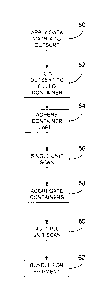Some of the information on this Web page has been provided by external sources. The Government of Canada is not responsible for the accuracy, reliability or currency of the information supplied by external sources. Users wishing to rely upon this information should consult directly with the source of the information. Content provided by external sources is not subject to official languages, privacy and accessibility requirements.
Any discrepancies in the text and image of the Claims and Abstract are due to differing posting times. Text of the Claims and Abstract are posted:
| (12) Patent: | (11) CA 2783239 |
|---|---|
| (54) English Title: | OUTSERT WITH VARIABLE DATA |
| (54) French Title: | PIECE EXTERIEURE AVEC DONNEES VARIABLES |
| Status: | Expired and beyond the Period of Reversal |
| (51) International Patent Classification (IPC): |
|
|---|---|
| (72) Inventors : |
|
| (73) Owners : |
|
| (71) Applicants : |
|
| (74) Agent: | MCMILLAN LLP |
| (74) Associate agent: | |
| (45) Issued: | 2014-12-16 |
| (22) Filed Date: | 2012-07-17 |
| (41) Open to Public Inspection: | 2013-12-19 |
| Examination requested: | 2012-07-17 |
| Availability of licence: | N/A |
| Dedicated to the Public: | N/A |
| (25) Language of filing: | English |
| Patent Cooperation Treaty (PCT): | No |
|---|
| (30) Application Priority Data: | ||||||
|---|---|---|---|---|---|---|
|
The specification discloses an outsert assembly for pharmaceutical and other containers. The assembly includes an outsert, a tape holding the outsert in a folded configuration, and a machine-readable identifier on the tape. The machine- readable identifier may include e-pedigree information. The outsert may include printed dosage information and relevant medical warnings.
La spécification révèle un mécanisme externe pour des contenants pharmaceutiques et autres. Le mécanisme comprend une pièce extérieure, un ruban de maintien de la pièce extérieure dans une configuration pliée et un identifiant lisible à la machine inscrit sur le ruban. L'identifiant lisible à la machine peut comprendre les renseignements de pédigrée en format électronique. La pièce extérieure peut comprendre l'information de dosage imprimée et les mises en garde médicales pertinentes.
Note: Claims are shown in the official language in which they were submitted.
Note: Descriptions are shown in the official language in which they were submitted.

2024-08-01:As part of the Next Generation Patents (NGP) transition, the Canadian Patents Database (CPD) now contains a more detailed Event History, which replicates the Event Log of our new back-office solution.
Please note that "Inactive:" events refers to events no longer in use in our new back-office solution.
For a clearer understanding of the status of the application/patent presented on this page, the site Disclaimer , as well as the definitions for Patent , Event History , Maintenance Fee and Payment History should be consulted.
| Description | Date |
|---|---|
| Inactive: IPC expired | 2023-01-01 |
| Time Limit for Reversal Expired | 2020-08-31 |
| Inactive: COVID 19 - Deadline extended | 2020-08-19 |
| Inactive: COVID 19 - Deadline extended | 2020-08-19 |
| Inactive: COVID 19 - Deadline extended | 2020-08-06 |
| Inactive: COVID 19 - Deadline extended | 2020-08-06 |
| Inactive: COVID 19 - Deadline extended | 2020-07-16 |
| Inactive: COVID 19 - Deadline extended | 2020-07-16 |
| Inactive: COVID 19 - Deadline extended | 2020-07-02 |
| Inactive: COVID 19 - Deadline extended | 2020-07-02 |
| Common Representative Appointed | 2019-10-30 |
| Common Representative Appointed | 2019-10-30 |
| Letter Sent | 2019-07-17 |
| Grant by Issuance | 2014-12-16 |
| Inactive: Cover page published | 2014-12-15 |
| Pre-grant | 2014-09-23 |
| Inactive: Final fee received | 2014-09-23 |
| Letter Sent | 2014-09-09 |
| Notice of Allowance is Issued | 2014-09-09 |
| Notice of Allowance is Issued | 2014-09-09 |
| Inactive: Approved for allowance (AFA) | 2014-08-05 |
| Inactive: Q2 passed | 2014-08-05 |
| Amendment Received - Voluntary Amendment | 2014-05-15 |
| Inactive: S.30(2) Rules - Examiner requisition | 2014-04-09 |
| Inactive: Report - No QC | 2014-03-26 |
| Inactive: Cover page published | 2013-12-23 |
| Application Published (Open to Public Inspection) | 2013-12-19 |
| Inactive: IPC assigned | 2012-11-27 |
| Inactive: First IPC assigned | 2012-10-02 |
| Inactive: IPC assigned | 2012-10-02 |
| Inactive: Filing certificate - RFE (English) | 2012-07-31 |
| Letter Sent | 2012-07-31 |
| Application Received - Regular National | 2012-07-31 |
| Request for Examination Requirements Determined Compliant | 2012-07-17 |
| All Requirements for Examination Determined Compliant | 2012-07-17 |
There is no abandonment history.
The last payment was received on 2014-06-26
Note : If the full payment has not been received on or before the date indicated, a further fee may be required which may be one of the following
Patent fees are adjusted on the 1st of January every year. The amounts above are the current amounts if received by December 31 of the current year.
Please refer to the CIPO
Patent Fees
web page to see all current fee amounts.
| Fee Type | Anniversary Year | Due Date | Paid Date |
|---|---|---|---|
| Request for examination - standard | 2012-07-17 | ||
| Application fee - standard | 2012-07-17 | ||
| MF (application, 2nd anniv.) - standard | 02 | 2014-07-17 | 2014-06-26 |
| Final fee - standard | 2014-09-23 | ||
| MF (patent, 3rd anniv.) - standard | 2015-07-17 | 2015-06-24 | |
| MF (patent, 4th anniv.) - standard | 2016-07-18 | 2016-06-22 | |
| MF (patent, 5th anniv.) - standard | 2017-07-17 | 2017-06-21 | |
| MF (patent, 6th anniv.) - standard | 2018-07-17 | 2018-06-27 |
Note: Records showing the ownership history in alphabetical order.
| Current Owners on Record |
|---|
| INC. CCL LABEL |
| Past Owners on Record |
|---|
| PIERRE DERY |